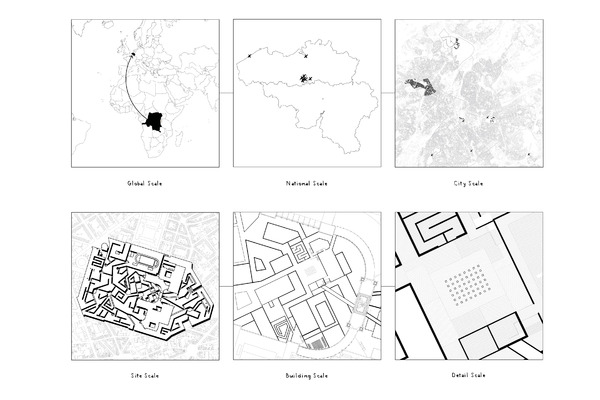The thesis researches the contentious heritage of King Leopold II of Belgium, with the aim of understanding the colonial heritage and retelling the narrative to demonumentalise the past. The research begins with an investigation into King Leopold’s sole ownership of the Congo Free State and the relatively untold narrative “… of the savage crime … of the long period of exploration and conquest that preceded it, and the way the world has forgotten one of the great mass killings of recent history.” (Adam Hochschild, 2012). Leopold is of particular interest, nicknamed the ‘Builder King’, much of his profits from his colonial reign were invested in monumental, landmark projects, royal residences, and masterplans that remain significant in Belgium today.
The maze is designed as the antithesis of 19th Century Brussels infiltrating the Parc du Cinquantenaire and obstructing monumental views of the Arcade du Cinquantenaire or Arches of the Severed Hands. Expanding the urban grain of the city works to blur the boundary of the site, creating organic growth and a convolution of routes that occupies the open space and disrupts the orthogonal geometry and classical language and provides a number of routes and alternative readings of the site and its history. This demonumentalises the site, completely changes the enduring legacy established by Leopold and creates a new district within the city of Brussels. The Bicentenaire Quarter at the centre introduces a programmatic function to the morphological maze, creating a brief that promotes inclusivity and self expression through art, culture and politics.
“History will one day have its say, but it will not be the history that Brussels, Paris, Washington, or the United Nations will teach, but that which they will teach in the countries emancipated from colonialism and its puppets…a history of glory and dignity.” (Patrice Lumumba, 1960)


